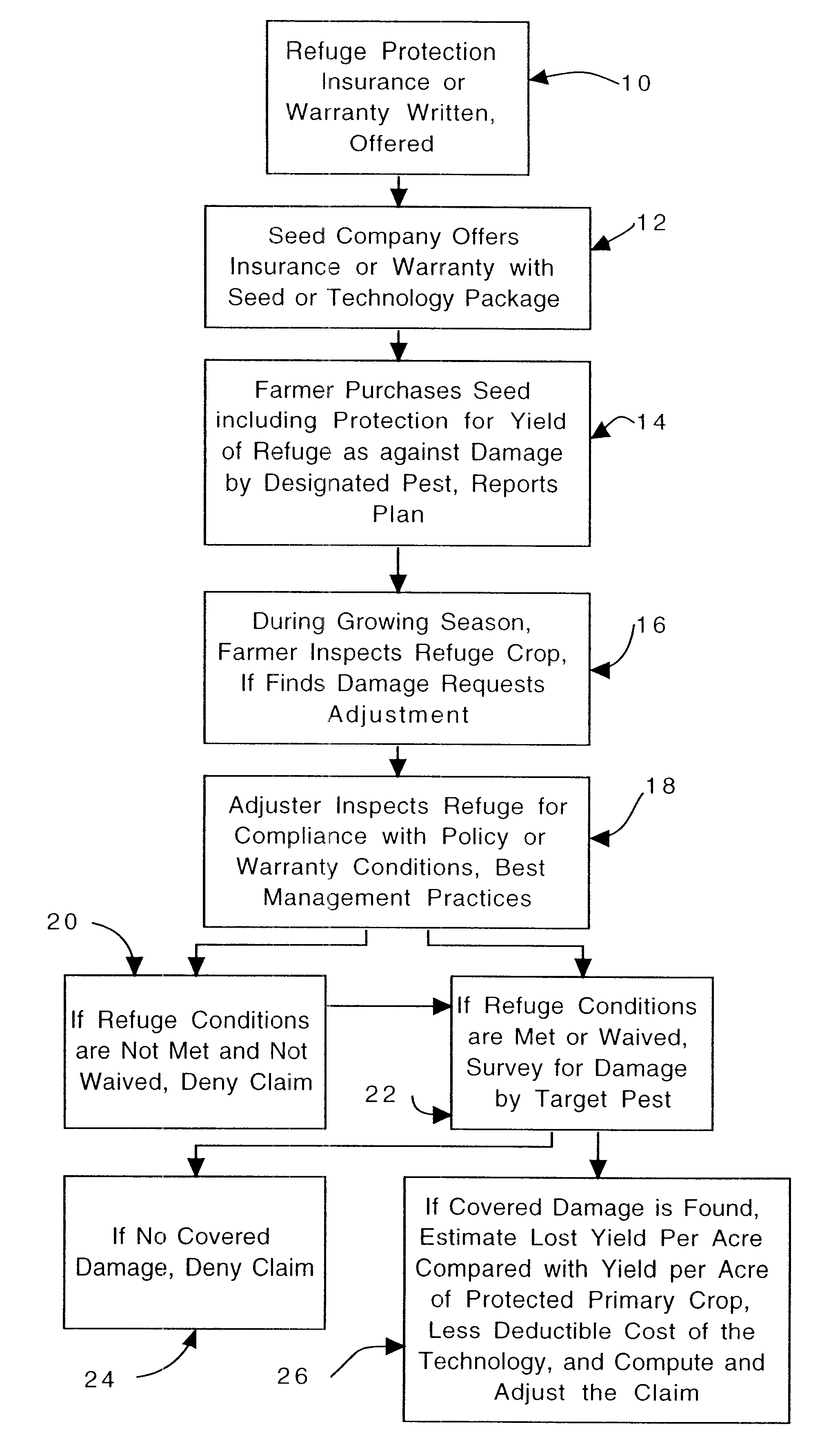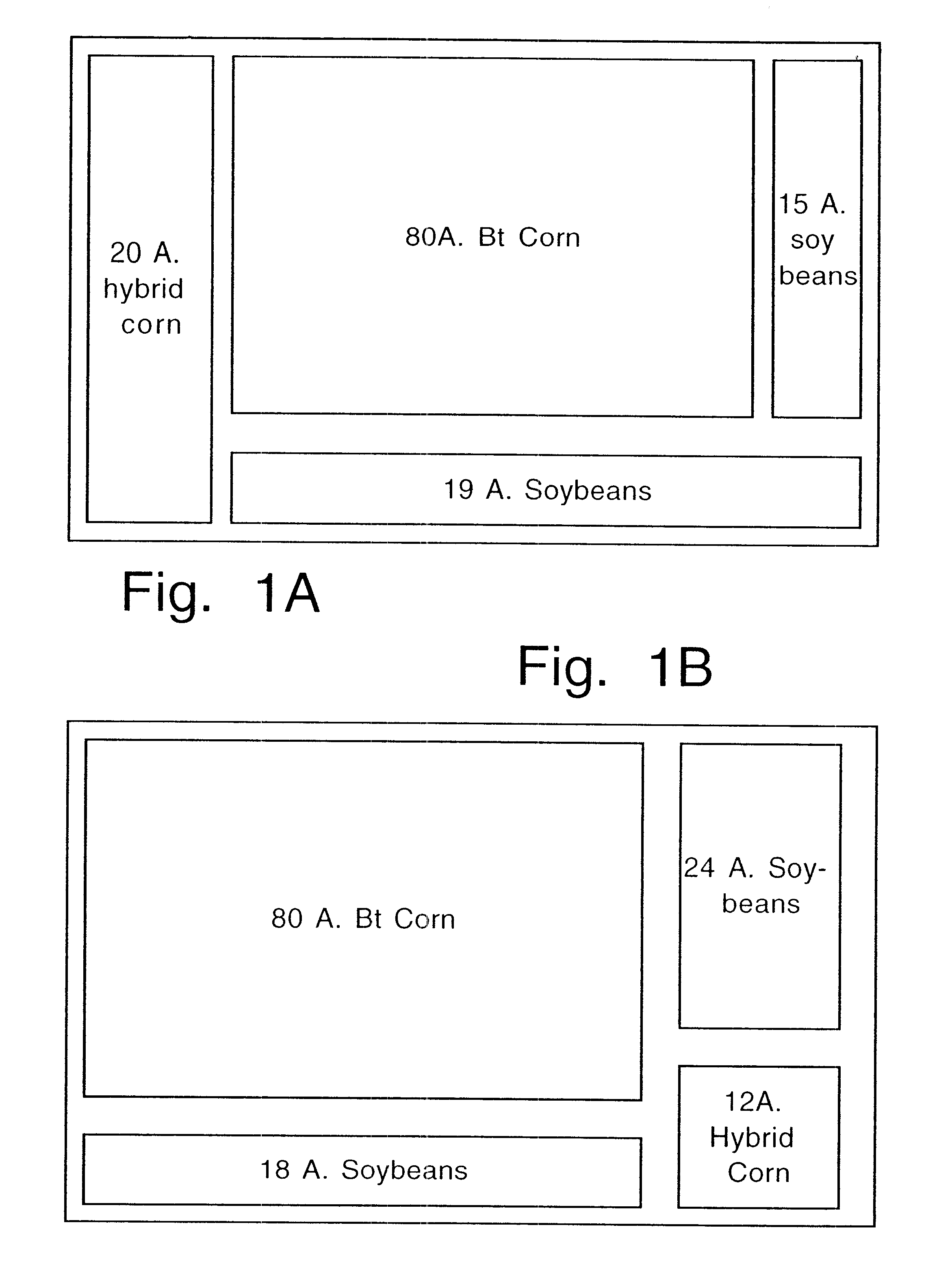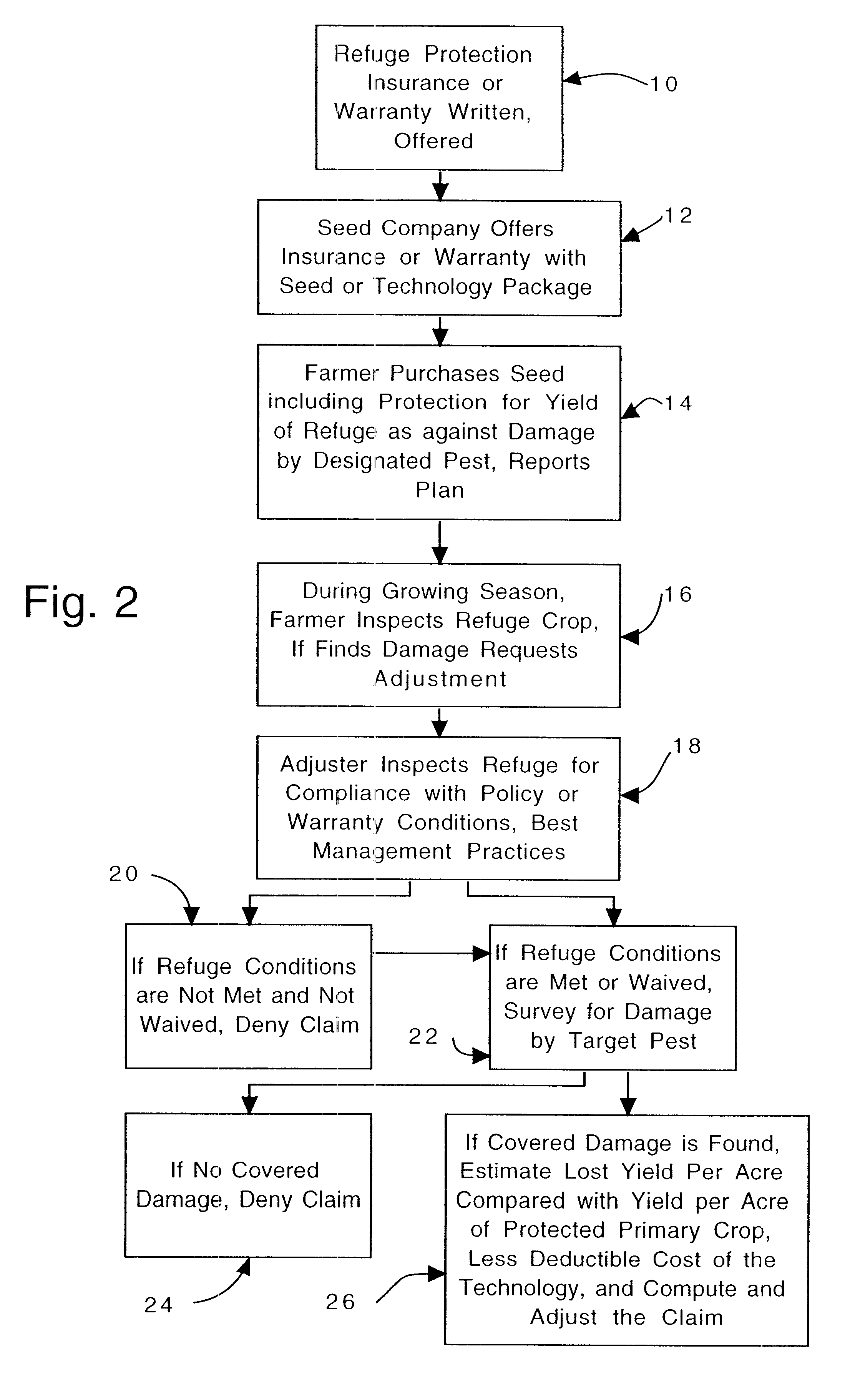Method for delaying the development in pest species of resistance to control techniques, using insurance to encourage correct uses of refuges
- Summary
- Abstract
- Description
- Claims
- Application Information
AI Technical Summary
Benefits of technology
Problems solved by technology
Method used
Image
Examples
Embodiment Construction
Pests and disease germs develop resistance to control techniques through processes of natural selection. Only those organisms resistant to a control technique such as a pesticide or able to avoid its application survive to mate and reproduce. The offspring of resistant parents may inherit the survival trait and if so may similarly avoid or survive exposure and later reproduce again. Soon the effectiveness of the control technique may be lessened, as discussed and shown for instance in the Ostlie reference, pages 10-12. In Ostlie's parlance, pests can be fully susceptible to a given toxin, with genes SS; or fully resistant, with genes RR; or have intermediate resistance, with genes SR or RS. If the control technique eliminates all pest individuals with one or both susceptibility genes, then only pests with RR genes will survive and reproduce. Mating of two RR individuals will produce all-resistant offspring, thus enabling survival and free reproduction of those selected by having hig...
PUM
 Login to View More
Login to View More Abstract
Description
Claims
Application Information
 Login to View More
Login to View More - R&D
- Intellectual Property
- Life Sciences
- Materials
- Tech Scout
- Unparalleled Data Quality
- Higher Quality Content
- 60% Fewer Hallucinations
Browse by: Latest US Patents, China's latest patents, Technical Efficacy Thesaurus, Application Domain, Technology Topic, Popular Technical Reports.
© 2025 PatSnap. All rights reserved.Legal|Privacy policy|Modern Slavery Act Transparency Statement|Sitemap|About US| Contact US: help@patsnap.com



